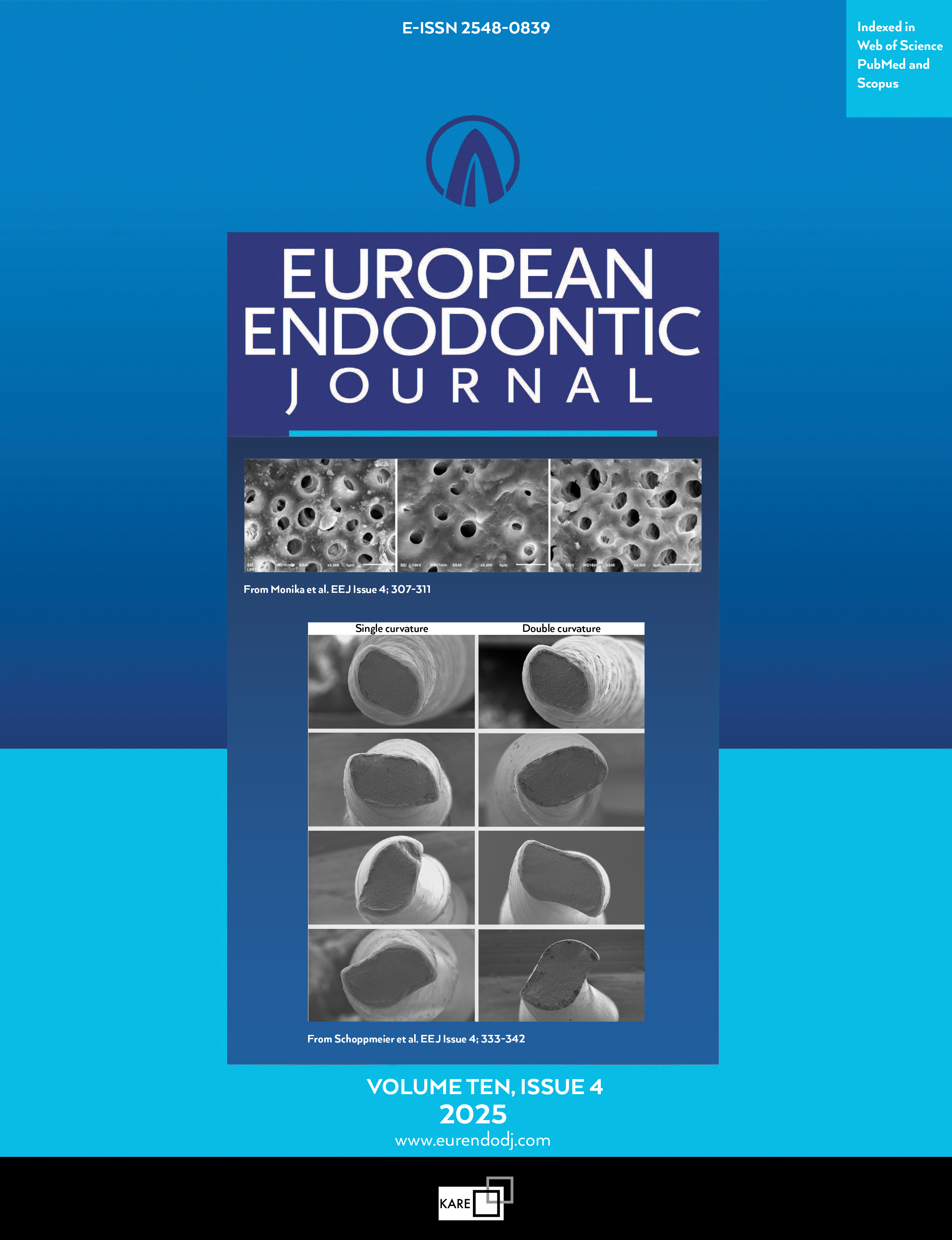Metrics
2024 IMPACT FACTOR
5 year Impact Factor
Eigenfactor Score
2024 CiteScore
Journal Citation Reports
(Clarivate 2025, JIF Rank)
Efficacy of Calcium Enriched Mixture Cement, Mineral Trioxide Aggregate and Calcium Hydroxide Used as Direct Pulp Capping Agents in Deep Carious Lesions - A Randomised Clinical Trial
Mridula Parameswaran1, Kiran Vanaja Madanan2, Ramesh Kumar Maroli3, Dhanya Raghunathan41Department of Conservative Dentistry and Endodontics, Government Dental College, Trivandrum, India2Department of Conservative Dentistry and Endodontics, Government Dental College, Alappuzha, India
3Department of Conservative Dentistry and Endodontics, Government Dental College, Kozhikode, India
4Freelance Public Health Practitioner, Kerala, India
Objective: The primary objective of this randomised clinical trial was to evaluate the efficacy of Calcium Enriched Mixture (CEM) cement compared to Mineral Trioxide Aggregate (MTA) and Calcium Hydroxide (CH) in maintaining pulp vitality when used for direct pulp capping (DPC) of deep carious lesions with reversible pulpitis and secondary objective was to assess the overall success of DPC in carious exposures.
Methods: One hundred and fifty patients diagnosed with reversible pulpitis with deep carious lesions were included in this study. Patients were randomly allocated into three groups (n=50), Group C: CEM group, Group M: MTA group, and Group D: CH (Dycal) group. After caries removal by mechanical excavation except for one carious spot, the removal of which resulted in the exposure of the pulp, the final carious spot was removed with a sterile no.2 round carbide bur. After haemostasis, the pulpal wound was dressed by a capping agent, followed immediately by permanent restoration. Patients were assessed for successful outcomes based on positive vitality tests, absence of clinical signs and symptoms, and PAI scores after 1, 3, 6, 12, and 18-month follow-up periods. The ANOVA test was employed to analyse quantitative variables, and the Pearson Chi-square test was used for qualitative variables. A Bonferroni Test was employed as the post hoc test for intergroup comparison. The significance level was set at p≤0.05 within all tests.
Results: The percentage of success in Group C was 86.7%, Group M was 77.3%, and Group D was 57.9%. This studys overall success rate after direct pulp capping of deep carious lesions was 74.8%. A statistically significant difference in PAI score was found between Groups C and D. Pain on percussion and response to vitality tests also showed significant differences among the three groups at the one-month follow-up.
Conclusion: CEM cement had comparable efficacy to MTA and was superior to CH in maintaining pulpal vitality following DPC in teeth with reversible pulpitis. An overall success rate of 74.8% indicated that DPC in deep carious lesions with reversible pulpitis could yield favourable clinical outcomes. (EEJ-2022-11-134)
Manuscript Language: English
(961 downloaded)


